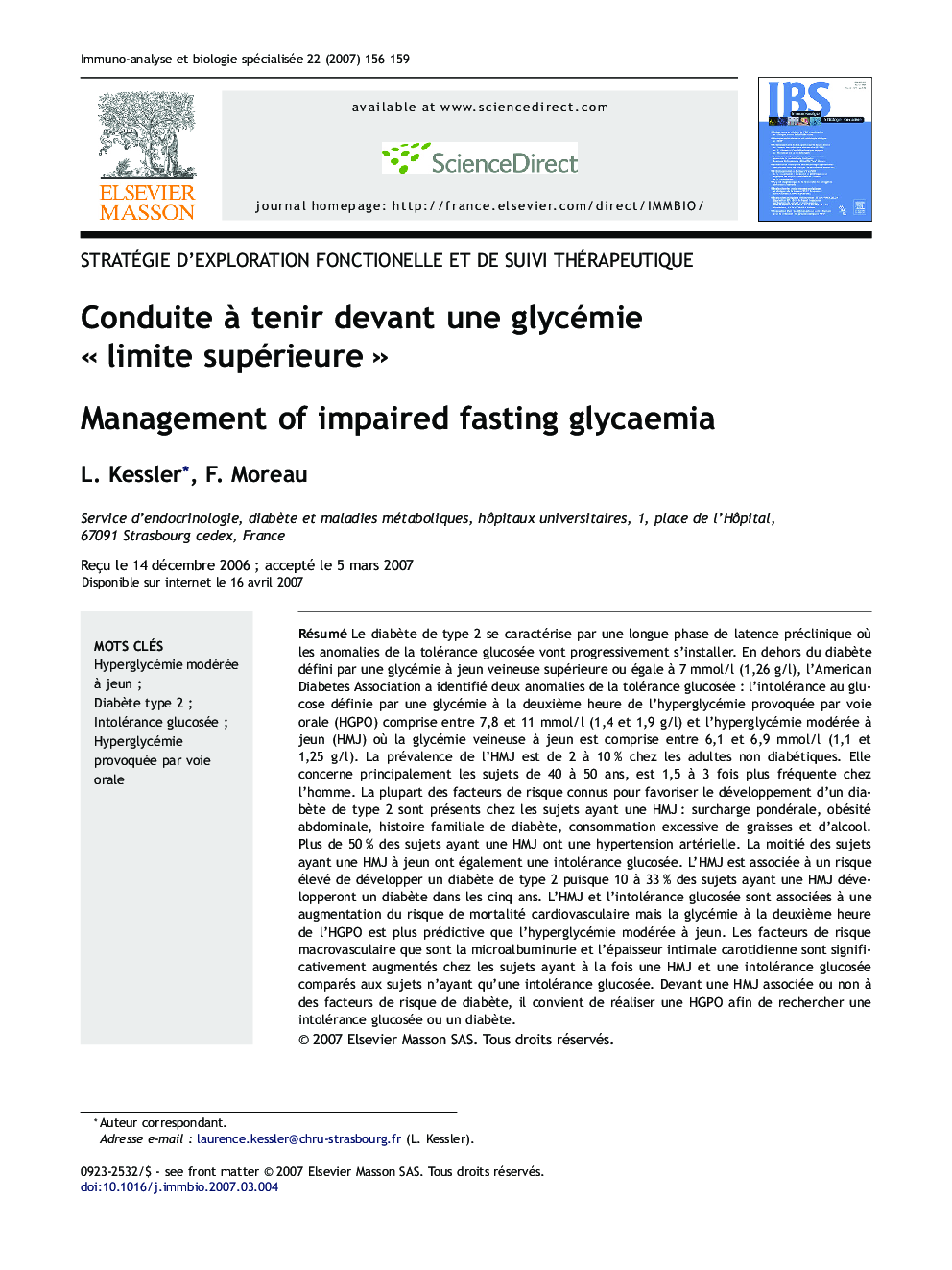| Article ID | Journal | Published Year | Pages | File Type |
|---|---|---|---|---|
| 8471846 | Immuno-analyse & Biologie Spécialisée | 2007 | 4 Pages |
Abstract
Type 2 diabetes is preceded by a long preclinical period with progressively glucose tolerance abnormalities. Beside diabetes defined by a venous fasting glucose superior to 7Â mmol/l (1.26Â g/l), American Diabetes Association identified two others abnormalities of glucose tolerance: the impaired glucose tolerance (IGT) defined by a two hours glycaemia between 7.8 and 11Â mmol/l (1.4 and 1.9Â g/l) at the oral glucose tolerance test (OGTT) and the impaired fasting glycaemia (IFG) with a fasting glycaemia between 6.1 and 6.9Â mmol/L (1.1 and 1.25Â g/l). Prevalence of IGF is between 2 and 10% in non diabetic adult subjects. IFG concerns mainly subjects aged 40-50Â years and is 1.5 to 3 fold more frequent in man. Most of the well-known risk factors for developing type 2 such us overweight, abdominal obesity, familial history of diabetes, over -consumption of fat and alcohol are present in subjects having IFG. Hypertension is present in more than 50% of the subjects with IFG. Fifty percents of subjects with IFG are also an impaired glucose tolerance. IFG is associated with a high diabetes risk because 10 to 30% of subjects with IFG will develop type 2 diabetes after five years. Both IFG and IGT are associated with an increase of risk of cardiovascular mortality while the two hours glycaemia of OGTT is more predictive than IFG. Microalbuminuria and carotid intima media-thickness are significantly increased in subjects having both IGT and IFG compared to subjects with only IGT. Subjects with IFG are associated with an increase risk of developing diabetes and cardiovascular disease. IFG requires the realization of an OGTT to search IGT or diabetes.
Keywords
Related Topics
Life Sciences
Biochemistry, Genetics and Molecular Biology
Cell Biology
Authors
L. Kessler, F. Moreau,
